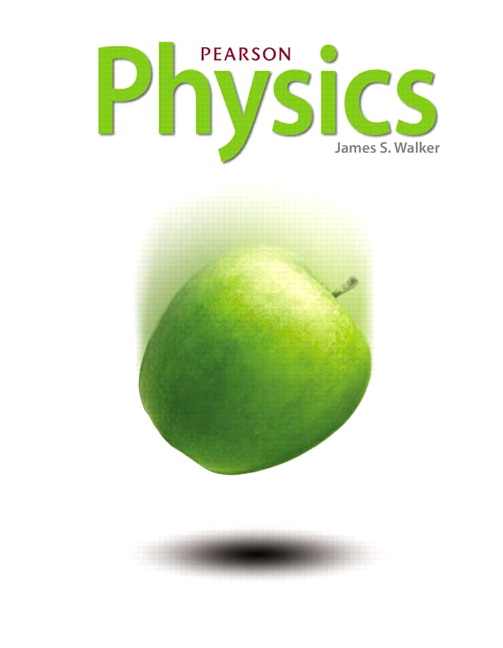
All Solutions
Page 815: Standardized Test Prep
$$
begin{aligned}
F = lvert q rvert vB sin theta
end{aligned}
$$
where $|q|$ is the magnitude of the charge, $v$ is the velocity of the object, $B$ is magnefic field, and $theta$ is the angle between the direction of the object and the magnetic field.
**GIVEN**
Charge of electron: $q = 1.6 times 10^{-19};text{C}$
Magnetic field: $B = 200;text{T}$
Velocity: $v = 2.0times 10^{5};text{m/s}$
Angle: $theta = 90degree$
$$
begin{aligned}
F = (1.6 times 10^{-19};text{C})(2.0times 10^{5};text{m/s})(B = 200;text{T}) vB sin 90degree = boxed{6.4times 10^{-12};text{N}}
end{aligned}
$$
$$begin{align*}
F=vert q vert vBsin theta
end{align*}$$
be the same as before.}$ By the right hand rule, the direction of the magnetic force would still into the page
$$begin{align*}
F=vert q vert vBsin{theta}
end{align*}$$
where $theta$ is the angle between the velocity vector $vec{v}$ and magnetic field vector $vec{B}$.
$$begin{align*}
F=vert q vert vBsin(0^{circ})=vert q vert vB (0)= 0;text{N}
end{align*}$$
$$begin{align}
F=vert q vert E
end{align}$$
The magnitude of the magnetic force due to a magnetic field is given by:
$$begin{align}
F=vert q vert vB sin{theta}
end{align}$$
The electric force is not dependent on the velocity $v$ of the charge. To solve for this force, we use Equation 1 with given quantities: $E=400frac{text{N}}{text{m}}$ and $q=1.60times10^{-19};text{C}$
$$begin{align*}
F=vert (1.60times10^{-19};text{C}) vert (400frac{text{N}}{text{m}})=64times10^{-18};text{N}
end{align*}$$
As stated earlier, the velocity $v$ of the charge does not matter in calculating the electric force. Thus, we can easily get the force through Equation 1, given $E=800frac{text{N}}{text{m}}$ and $q=-1.60times10^{-19};text{C}$.
$$begin{align*}
F=vert (-1.60times10^{-19};text{C}) vert (800frac{text{N}}{text{m}})=128times10^{-18};text{N}
end{align*}$$
$$begin{align*}
F &=vert (1.60times10^{-19};text{C}) vert (60000frac{text{m}}{text{s}})(800;text{T}) sin{90^{circ}}\
&=vert (1.60times10^{-19};text{C}) vert (60000frac{text{m}}{text{s}})(800;text{T})\
&=7.68times10^{-12};text{N}
end{align*}$$
$$begin{align*}
F=0;text{N}
end{align*}$$
$$
frac{F}{Delta L}=frac{mu_{0}I_{1}I_{2}}{2pi r}
$$
Here we have $I_{1}=I_{2}=0.5$ A and $r=0.2$ cm $=0.002$ m. Hence
the force per meter is
$$
frac{F}{Delta L}=frac{left(1.26times10^{-6} {rm kgms^{-2}A^{-2}}right)left(0.5 {rm A}right)left(0.5 {rm A}right)}{2pileft(0.002 {rm m}right)}=2.5times10^{-5} {rm N/m}
$$
And since the current are flowing in the same direction the force
is attractive and hence force on bottom wire is upward direction.
The magnetic field produced by a long, straight wire is given by
$$begin{align}
B = frac{mu_0 I}{2pi r}
end{align}$$
where the permeability of free space is $mu_0 = 4pitimes 10^{-7};text{T}cdot text{m/A}$, $I$ is the current running through it, and $r$ is the radial distance from wire.
We first find $B_1$ by plugging in the following values on Equation 1: $I = 0.5;text{A}$ and $r = 0.002;text{m}$.
$$begin{align*}
B_1 = frac{left(4pitimes 10^{-7};text{T}cdot frac{text{m}}{text{A}}right) (0.5;text{A})}{2pi (0.002;text{m})} = 5times 10^{-5};text{T}
end{align*}$$
$$begin{align*}
B_1 = frac{left(4pitimes 10^{-7};text{T}cdot frac{text{m}}{text{A}}right) (0.5;text{A})}{2pi (0.004;text{m})} = 2.5times 10^{-5};text{T}
end{align*}$$
$$begin{align*}
B_{text{P}} &= B_1 + B_2 \ &= 5times 10^{-5};text{T} + 2.5times 10^{-5};text{T} \ &= boxed{7.5times 10^{-5};text{T}}
end{align*}$$
Since the top wire is reversed, the magnetic field produced by two wires do not flow on the same direction. Hence, the magnetic field experienced at point P is the sum of $-B_1$ (into the page)and $B_2$ (out of page).
$$begin{align*}
B_{text{P}}’ &= B_1 + B_2 \ &= -5times 10^{-5};text{T} + 2.5times 10^{-5};text{T} \ &= boxed{-2.5times 10^{-5};text{T} text{ or } 2.5times 10^{-5};text{T};text{into the page}}
end{align*}$$
(b) $2.5times 10^{-5};text{T}$, into the page
Haven't found what you were looking for?
Search for samples, answers to your questions and flashcards

